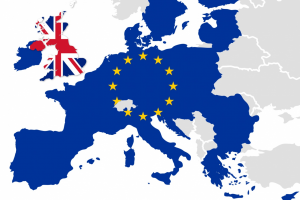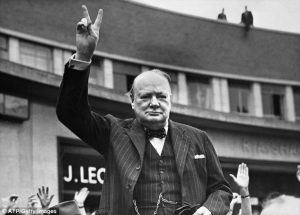The Imperial Political Elite Establishment’s Strategies for Protecting British Power
On 21st May, Attlee sent a letter to Churchill stating that “there were acute differences between the parties, especially over economic policy.”16 Thus, Attlee proposed an autumn election. Churchill’s reply was to tend his resignation to the King. Four hours later he was summoned back and asked to form a new administration. He accepted the commission, and asked for a dissolution of Parliament, which was granted. Britain would go to the polls on 5th July 1945 for the first time in general election since November 1935.
The result, which was declared on 26th July, showed that “the Conservatives had suffered their greatest reverse since the Liberal landslide of 1906. Labour had won 166 seats from the Conservatives, and lost none of them. Labour had gained a total of 393 seats and 48.0 per cent of the poll, compared to 154 seats and 38.1 per cent in 1935.”17 On the whole, taking the National Coalition and the Liberals into account, the swing to Labour was 11.8% and Labour was left with an overall majority of 147.
In 1945 the Labour Government, led by Clement Attlee, inherited a huge and complex Empire. It appeared that the British Empire had yet again emerged intact from a fundamental challenge, but in real terms this was not the case. The global war’s impact on Britain was a massive debt, mainly to the United States. Additionally, estimates have shown that 10% of Britain’s pre-war wealth or no less than one-quarter if disinvestments were also included, had been lost. Most importantly, Britain was able to pay for only a fraction of the imports she needed both for current survival and for the reconstruction of her economic well-being. “Through lend-lease and her ability to run up enormous debts to members of the sterling area it had been possible during the war to divert a large proportion of her former export industries to war production, so that at the end of 1944 her exports stood at only about one-third of their pre-war volume.”18
As for import needs, they remained the same as in 1938, in addition to the fact that terms of trade had also moved against Britain; “invisible earnings had fallen through the loss of one-quarter of the merchant-marine, and liquidation of over £1 billion in foreign investment. Britain’s external liabilities were nearing £3.5 billion by the middle of 1945 – a seven-fold increase – yet her reserves totalled less than £500 million.”19
According to the calculations, over the next three years, before Britain could pay its way internationally, further debts of at least another £1.25 billion would be incurred. Furthermore, given the many changes in the country’s economic predicament, “it was expected that in order to achieve long-term solvency the volume of British export would have to be at least 50 per cent higher than before the war. This figure was later revised to 75 per cent. Yet, in June 1945, no less than 45 per cent of the nation’s employable man-power was still directly or indirectly directed to the war effort. Conversion to the needs of peace had barely begun.”20 As a result “the material fruits of victory were not much in evidence.21



